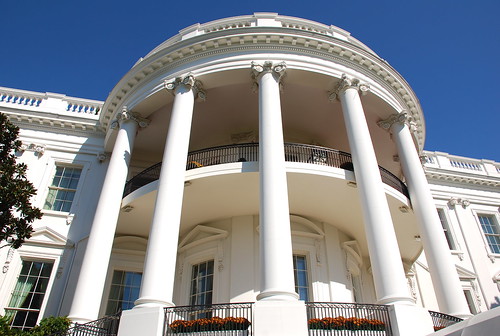 In a recent article, Religion News Service discusses a Gallup poll survey, in which a majority of Americans said they would vote for a “well-qualified” atheist for President. According to this survey, 54% of those polled would vote for a non-believer, the highest percentage since Gallup first began asking this question. In 1958, when this question was first asked, only 18% polled said they would vote for an atheist. Kimberly Winston, of the Religion News Service explains:
In a recent article, Religion News Service discusses a Gallup poll survey, in which a majority of Americans said they would vote for a “well-qualified” atheist for President. According to this survey, 54% of those polled would vote for a non-believer, the highest percentage since Gallup first began asking this question. In 1958, when this question was first asked, only 18% polled said they would vote for an atheist. Kimberly Winston, of the Religion News Service explains:
Still, an imaginary atheist candidate passed the 50 percent threshold for the first time when Gallup asked the question in August 2011, so the trend is upward.
“We have seen an enormous change over time in the willingness to vote for an atheist,” said Karlyn Bowman, a senior fellow at the American Enterprise Institute for Public Policy Research, which reports the numbers in its current newsletter.
“But I think the numbers also remind us that this is a deeply religious country. That doesn’t mean we are all going to church on Sunday, but that having religion in your life is valuable to most Americans and I think that explains the resistance.”
Indeed, in the current poll, 43 percent said they would not vote for a well-qualified atheist, a percentage that was higher among Republicans than Democrats (58 percent) or independents (56 percent).
And there is more discouraging news for nonbelievers. In his analysis of the recent data, Gallup’s managing editor Jeffrey M. Jones writes that for groups whose approval ratings hover within a narrow range of percentage points for more than 10 years — which might be happening for atheists — it can take more than fronting an appealing atheist candidate to reach more universal numbers, like those enjoyed by women (95 percent), blacks (96 percent) and Catholics (94 percent).
“It may be that there is an inherent bias that isn’t going to change” for some groups, like atheists, whose numbers have leveled off, Jones said. “It is, in many cases, a long process and some of these groups have a way to go.”
For the full article, click here.












